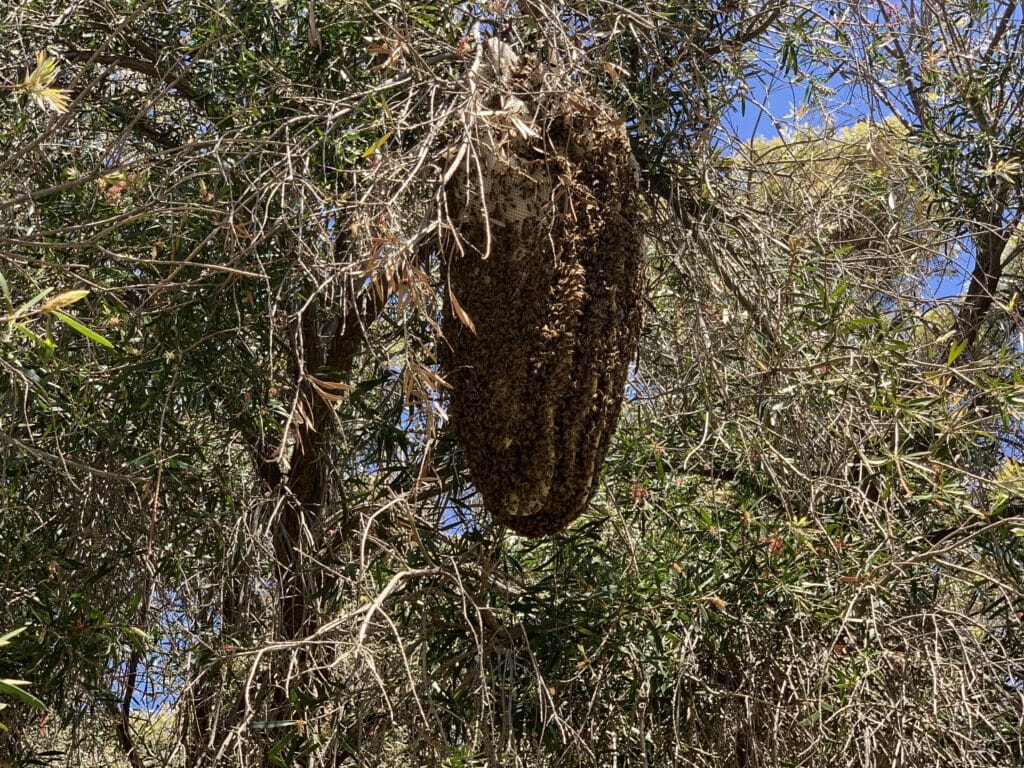Yesterday the ABC reported on a “monster hive” removal from the ceiling of a Queensland bathroom. We could tell you a few stories about removing monster beehives!
The ABC QLD Country hour posted a great article yesterday. It followed apiarist Scott Whitaker and his encounter with what “could only be described as a monster”, “the largest colony of bees he has ever removed from a home”.
Removing 50,000 bees and a lot of honeycomb from a bathroom ceiling took him nearly “12 physically-demanding hours”. Mr Whitaker then found honey stores that went back another 1.2 metres further than he first thought.
As usual from the ABC, it’s a great, fact-checked read. The article covers the ins and outs of the beehive removal and relocation, Whitaker’s quarantine practices for rescue bees (to protect other beehives from American Foulbrood), and why rescuing, not poisoning, bees is always a good idea. Firstly, to stay ahead of the game so that bees don’t start to decline in Australia as they have elsewhere. Secondly, you’ll want a hive removed properly if you want to avoid a ceiling “slime-out,” courtesy of African Small Hive Beetles. Yuck!
One thing’s for sure, Mr Whitaker shares our passion for working with bees:
“I love my job. It’s always kind of exciting to open a new hive and see what’s in there,” he said.
“Finding the queen is always a nice, little cathartic moment, because it really is a bit of a needle in a haystack.”
We’ve had to remove a few interesting hives in our time too. The biggest would have been from a Hopetoun residence in November 2017, measuring at least two square metres in volume! We got some healthy new hives of bees out of that job, now making honey from our Albany apriary site. Tomorrow we’ll be removing this one in North Perth!





